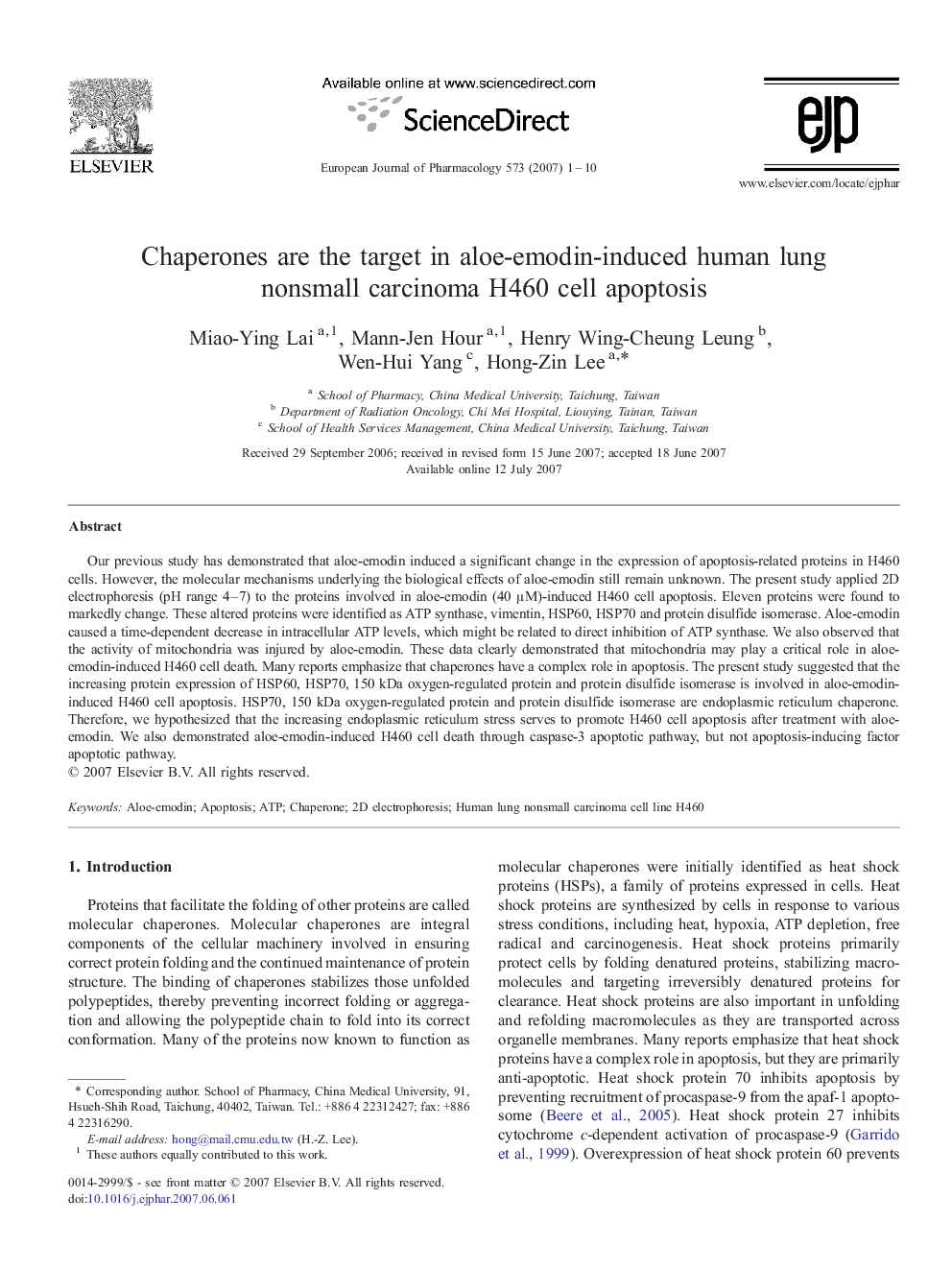| Article ID | Journal | Published Year | Pages | File Type |
|---|---|---|---|---|
| 2535859 | European Journal of Pharmacology | 2007 | 10 Pages |
Our previous study has demonstrated that aloe-emodin induced a significant change in the expression of apoptosis-related proteins in H460 cells. However, the molecular mechanisms underlying the biological effects of aloe-emodin still remain unknown. The present study applied 2D electrophoresis (pH range 4–7) to the proteins involved in aloe-emodin (40 μM)-induced H460 cell apoptosis. Eleven proteins were found to markedly change. These altered proteins were identified as ATP synthase, vimentin, HSP60, HSP70 and protein disulfide isomerase. Aloe-emodin caused a time-dependent decrease in intracellular ATP levels, which might be related to direct inhibition of ATP synthase. We also observed that the activity of mitochondria was injured by aloe-emodin. These data clearly demonstrated that mitochondria may play a critical role in aloe-emodin-induced H460 cell death. Many reports emphasize that chaperones have a complex role in apoptosis. The present study suggested that the increasing protein expression of HSP60, HSP70, 150 kDa oxygen-regulated protein and protein disulfide isomerase is involved in aloe-emodin-induced H460 cell apoptosis. HSP70, 150 kDa oxygen-regulated protein and protein disulfide isomerase are endoplasmic reticulum chaperone. Therefore, we hypothesized that the increasing endoplasmic reticulum stress serves to promote H460 cell apoptosis after treatment with aloe-emodin. We also demonstrated aloe-emodin-induced H460 cell death through caspase-3 apoptotic pathway, but not apoptosis-inducing factor apoptotic pathway.
